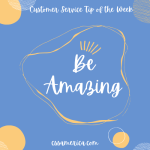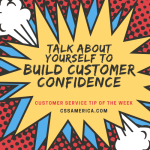
We typically conduct 35-40 surveys a year for the sports industry. And while you may work in a different industry, there are lessons to be learned by the types of research that sports organizations seek and why they seek that information.
First, we design and deliver many pre-event surveys. This is especially important when you’re trying to understand who is going to be attending the event, and which of those are first-time customers. Think about your own business. How much would you benefit from knowing your customers’ expectations before they ever walked in the door? How much more tailored could your information be if you knew what was of greatest interest to them? How much more effective could you be in creating a comfortable experience if you understood what their awareness level was of your operations, facilities, products, and services? How much easier would it be to get a return visit if you understood the reason they chose your organization or your event in the first place? Think about learning from your customer before they ever walk in the door.
Second, we do a lot of surveys based on the experience itself. These are almost immediate surveys that enable us to understand exactly how the different steps in the customer journey were perceived by the customer. You can immediately learn the customer’s likes and dislikes. You can strategically think about what aspects of the customer journey need to be improved and why. You get raw, real information about those aspects of the experience that can make or break the customer’s relationship with you.
Third, we provide post-event research with clients, and this not only includes some input we’re seeking on the experience itself, but it also includes gauging their interests, their priorities, their retention drivers, their willingness to return, and their interest in additional products and services. Too many organizations view existing customers the same way they view prospects. But if you view your customer as a unique individual that you need to develop a relationship with, then you realize that you need to know a lot about them – why they would stay with you or go to a competitor. Identify what you need to know about your customer to create a great relationship with your customer.
A fourth common research approach we use is Exit Interviews. This is when we go to clients that have not renewed or have cancelled their tickets or ended their relationship with the organization. The primary purposes of this research are twofold: First, we are trying to understand why they left so that we can look at fans of a similar profile and develop strategies to better retain those who we still do have. Second, we are looking for opportunities to win back these fans by truly understanding their retention drivers and their willingness to give us a second chance.
Although these are only 4 different research vehicles within the sports industry, they’ll give you a feel for the core approach we use with many of our clients. Think about your individual customers and the impact they have on your company as a whole. Devise a research strategy that will help you learn from them throughout their customer journey and even after they’ve left so that you can best keep and grow with your customers.
Learn how to play ball with your customers.
Signup for FREE Tips! Contact Us More Resources for You Visit Our Home Page























